Hello.
I would like to present you a short description of a cheap 8-channel logic analyzer based on the CY7C68013A microcontroller from Cypress.

This device can be purchased from Chinese auction portals for about $ 7 with shipment or, for example, from a domestic auction site for about PLN 40 with shipment. At this price, we get an analyzer, USB cable and a colored 10-wire ribbon cable with BLS01 type connectors on both sides.
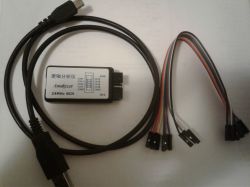
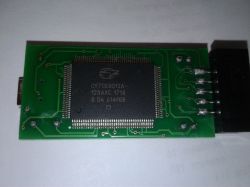

With the help of this analyzer, we can view digital signals up to 5V.
This device communicates with a computer via a USB port and Saleae Logic software. Here is a description of one of the forum members, what to change to use the USBee software:
https://www.elektroda.pl/rtvforum/topic2644607.html
Saleae software has the ability to analyze such protocols as: UART, I2C, SPI, 1-Wire, CAN, HD44780, JTAG, LIN, Manchester, Modbus and many others.
Below I present the effects of viewing several protocols:
- HD44780
Continuous display of the text "Test UART" shown here:
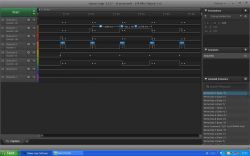
Analyzer settings for the tested protocol:
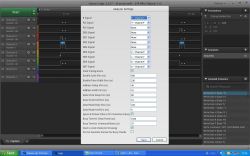
- I2C
Here we have the number "123" still being sent and a preview of the settings for this protocol.
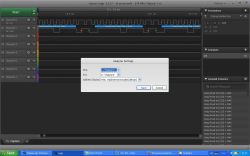
- SLEEPS
In this case, the number "100" was still sent.

Below are the settings for this protocol.

- UART
In turn, the text "TEST UART RS232" is sent here.
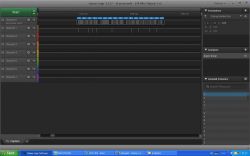
Below are the settings for this protocol.

Here we can choose in what form the characters decoded by the analyzer should be displayed - whether they should be ASCII, HEX, BIN or decimal characters.
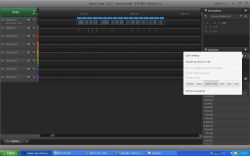
Below is an example where the state of the processor port is changed every 1ms, fed to the first channel of the tested analyzer.
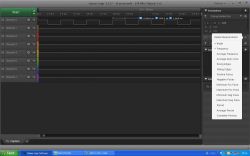
As you can see - the program shows us the duration of the high state (described here as width - W), frequency - f and period - T. As you can see - you can choose what the program should show.
Here you can export what we have decoded to e.g. Excel or a text file.
The maximum length of the tested samples is 1024 seconds, assuming that we are sampling at a frequency of 1MHz - the larger the sampling, the shorter the recording time of the tested sample.
The captured sample can be both moved forward / backward and "zoomed in and out".
After saving the tested sample, we have the option to enter the character into the "search engine" to check whether the character we are looking for exists in the sample we have read.
You can start the sample recording by pressing the "START" button or by changing the options, eg to the possibility of automatic start after detecting, for example, a rising edge or a high state.
Belongstake into account that the analyzer housing has incorrectly described channels in relation to Saleae Logic software, i.e. on the sticker we have counted channels from 1 to 8 and in the program they are counted from 0 to 7. It should be assumed that channel 1, according to the description from the housing, is a channel 0 in the program, 2 from the description on the housing is 1 in the program, etc.
Unfortunately, during the test of this analyzer, I did not have access to an oscilloscope to be able to better test it, but I hope that this description will convince people who are considering purchasing this analyzer.
I would like to present you a short description of a cheap 8-channel logic analyzer based on the CY7C68013A microcontroller from Cypress.

This device can be purchased from Chinese auction portals for about $ 7 with shipment or, for example, from a domestic auction site for about PLN 40 with shipment. At this price, we get an analyzer, USB cable and a colored 10-wire ribbon cable with BLS01 type connectors on both sides.



With the help of this analyzer, we can view digital signals up to 5V.
This device communicates with a computer via a USB port and Saleae Logic software. Here is a description of one of the forum members, what to change to use the USBee software:
https://www.elektroda.pl/rtvforum/topic2644607.html
Saleae software has the ability to analyze such protocols as: UART, I2C, SPI, 1-Wire, CAN, HD44780, JTAG, LIN, Manchester, Modbus and many others.
Below I present the effects of viewing several protocols:
- HD44780
Continuous display of the text "Test UART" shown here:

Analyzer settings for the tested protocol:

- I2C
Here we have the number "123" still being sent and a preview of the settings for this protocol.

- SLEEPS
In this case, the number "100" was still sent.

Below are the settings for this protocol.

- UART
In turn, the text "TEST UART RS232" is sent here.

Below are the settings for this protocol.

Here we can choose in what form the characters decoded by the analyzer should be displayed - whether they should be ASCII, HEX, BIN or decimal characters.

Below is an example where the state of the processor port is changed every 1ms, fed to the first channel of the tested analyzer.

As you can see - the program shows us the duration of the high state (described here as width - W), frequency - f and period - T. As you can see - you can choose what the program should show.
Here you can export what we have decoded to e.g. Excel or a text file.
The maximum length of the tested samples is 1024 seconds, assuming that we are sampling at a frequency of 1MHz - the larger the sampling, the shorter the recording time of the tested sample.
The captured sample can be both moved forward / backward and "zoomed in and out".
After saving the tested sample, we have the option to enter the character into the "search engine" to check whether the character we are looking for exists in the sample we have read.
You can start the sample recording by pressing the "START" button or by changing the options, eg to the possibility of automatic start after detecting, for example, a rising edge or a high state.
Belongstake into account that the analyzer housing has incorrectly described channels in relation to Saleae Logic software, i.e. on the sticker we have counted channels from 1 to 8 and in the program they are counted from 0 to 7. It should be assumed that channel 1, according to the description from the housing, is a channel 0 in the program, 2 from the description on the housing is 1 in the program, etc.
Unfortunately, during the test of this analyzer, I did not have access to an oscilloscope to be able to better test it, but I hope that this description will convince people who are considering purchasing this analyzer.






